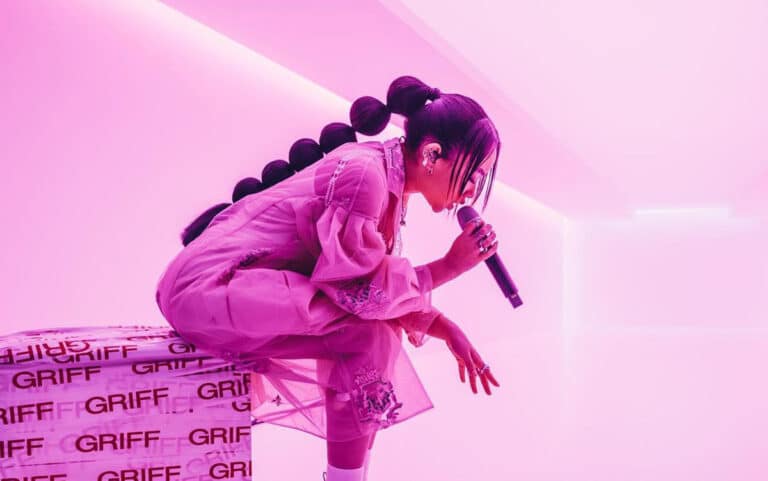From Gigi to Doja, bubble braid is the versatile hair trend you can pull off all summer
It’s not every day that I braid my hair. On the days that I do, I skip ten reps of tricep extensions in the morning. To top off the physical strains required to pull off the classic hairstyle is a list of hybrid techniques—with names ranging from fishtail and mermaid to pull-through and rope twisted braids. For those pushed for both time and effort, there’s an effortless hair trend in town that I’d like to introduce you to: bubble braids.
What are bubble braids?
Fuelled back into popularity with the resurgence of Y2K, bubble braids are ponytails or pigtails fluffed up to create sections—generously spaced out with the help of elastics. Hybrids of the trend depend on various factors like the volume, hair texture, number of sections, choice of height (high, mid or low) and the types of embellishment. In this regard, they can be worn in pigtails, half-up braids or high ponys. No matter what hybrid you choose, however, bubble braids are guaranteed to be an Insta-worthy hairstyle you don’t need to be a pro to perfect.
Although bubble braids are not a new trend, they have been sweeping runways, red carpets and social media lately. In March 2021, we saw Doja Cat slaying the trend at the Grammys. Then came Priyanka Chopra Jonas strutting onto the BAFTAs. The following months saw Gigi Hadid celebrating her birthday with a few face-framing bubble braids and Griff—named as 2021’s Rising Star at the Brit Awards—rocking the look during and after her show-stopping performance.
Be it flat sections or full-blown bulbs, bubble braids can spice up a classic braid or ponytail in just a few minutes. So, what are you waiting for? All the A-listers are on it. Let’s catch up to the effortless trend minus five cans of hairspray today.
Step 1: Decide on the placement of your ponytail
First up is to decide where the base of your ponytail will sit. You can opt for a high ponytail if you want a sporty look, a mid ponytail for casualness or a low ponytail to channel ultimate sleekness. If you have short hair and your high ponytail ends up looking like a water fountain, two factors have got you covered: extensions and the number of bubbles. With extensions, always make sure to add the same type as your natural hair texture and adjust the number of bubbles to suit the length.
Step 2: Tie the base ponytail and start sectioning
Once you’ve decided on the placement, it’s time to go ahead and commit to the trend. Brush your hair into a ponytail at the choice of height and tie it off with an elastic. This is your base ponytail for all of the bubbling that is to come. Neatly brush out this ponytail before grabbing more elastics and getting to work. Depending on the size of your bubbles—be it flat-sections like Gigi or full-blown bulbs like Griff—take an elastic and tie it a couple of inches down your ponytail. Keep sectioning your hair till you reach the desired tail length for your bubble braids.
Step 3: Bubble up those sections
It’s not bubbles unless you can see them, right? After dividing your base ponytail into sections, start teasing and loosening the space tied off between two elastics using your fingers. This helps voluminise individual sections into bubbles. Tease all of the sections until you reach the desired shape. Brush out the tail and voila! You’re ready to ride off into the sunset with a hairdo that looks like you’ve put your entire heart and soul into.
Step 4: Spice it up even more
Let’s talk about various bubble braid upgrades that come pre-installed with the trend. For starters, you can play around with the colour and type of elastic you use for sectioning. Regular elastics can be switched out with scrunchies. You can also choose to alternate between the colour and the type. Next is the number of sections. While closely-sectioned bubble braids are guaranteed to turn local cul-de-sacs into runways, various foam shapes can be embedded into the sectioning to completely amp up your hair game. Flowers and rhinestones are additional embellishments one can choose from.
Although bubble braids don’t pop or flatten out easily, hairspray is often suggested to seal the look. But you only need to commit to the spraying if you have hair whipping on your itinerary like Doja. If not, play around with the messiness and flyways to curate a personalised look. After all, if you can do a ponytail, you can do a bubble braid.
@mattloveshair reposting bc original got taken down 🥺 #flowercrown #bubblebraid #hairtrends
♬ There She Goes - The La's





